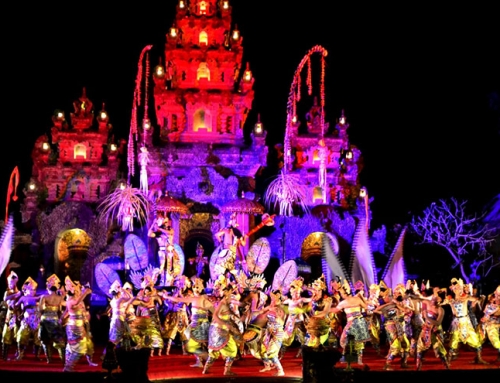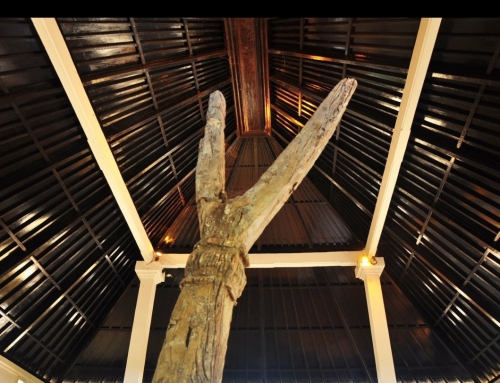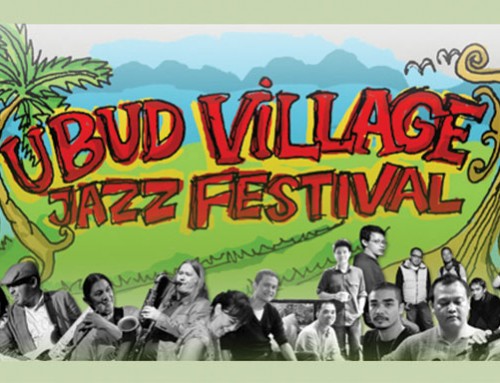We’ve Got Rhythm!
The iconic Kecak dance, performed by large groups of shirtless men chanting in rhythmic counterpoint as other dances presents scenes from the ancient Mahabrata, is a staple of the Balinese dance repertoire that is enjoyed by thousands of Bali visitors each day.
, – oftentimes numbering as much as 150, each segment of the kecak is punctuated by choruses of chanted “cak…cak….cak” (pronounced as ‘chak,chak, chak’) .
Dance aficionados in Bali argue endlessly that the haunting sounds of the kecak represents the sounds of an army of primates in the service of monkey-like warrior Vanara; duplicates the percussive sounds sounds of the drums and gongs of a gamelan orchestra (gamelan suara); imitates the sound of the household gecko lizard or, at its most basic level, draws its inspiration from the “cak” singing of farmers heard in the evening from roadside arak stands across Bali.
When we sat all these alternative descriptions before an aged Bali dance master, the old man scratched his chin and suggested that each explanation of the unique sound of the Kecak, considered individually or severally, might well be true.
The earliest reports of the Kecak predate the Dutch occupation of Bali when, according to local folklore, the village of Bona in Gianyar was besieged by a deadly epidemic that claimed a large number of lives. Prayers for salvation were offered in a local temple when a Sanghyan medium, deep in trance, delivered a message from the resident deities demanding a new form of music and dance unaided by the bronze instruments of a traditional Balinese orchestra.
More contemporary chronicles claim the dance was rejuvenated and reworked in the village of Bedulu by German-born artists Walter Spies and Balinese dancer Wayan Limbak to support a film project in the 1930s or, alternatively, was reborn in Bona under the supervision of I Gusti Lanang Oka and I Nengah Murdarya.
The most recent revitalization of Kecak is credited to I Made Sija of Bona who helped organize and train Kecak cultural groups who eventually traveled the world promoting Balinese culture starting in the mid-1960s.
Not subject to debate is that the fact that Kecak dance presents a scene from the ancient Ramayana tale of the battle between good and evil within the context of the abduction of Sita and the ensuing battle by Vanara against the evil King Rahawana.
Setting aside the hour or so to attend a Kecak dance during a Bali trip should form part of every visitors “must do” list. Village-based dance groups present dances on an almost daily basis across Bali, with one of the most popular presentations found at sunset each evening at the Uluwatu Temple in South Bali.
Those contemplating taking in a kecak might find the follow plot synopsis useful in following the story line.
Scene 1
Rama, Sita and Laksmana enter the dance area where the Kecak chorus of men, sitting in concentric circles have literally “set the stage” by singing a mesmerizing chanted prologue. As the three dancers circulate a golden deer appears, begging capture by Prince Rama. In pursuit of the golden deer, Rama leaves Sita and Laksmana alone on the dance floor.
Suddenly a scream for “help” is heard, prompting SIta to insist to Laksmana that the voice in distress must be that of her husband Rama. Sita implores a reluctant Laksmana to investigate the screams, snidely suggesting Laksmana perhaps seeks advantage in the death of her beloved Rama. Insulted at Sita’s insinuations, Laksmana departs the stage leaving Sita utterly alone in the forest.
Scene 2
The evil King Rahwana appears, intent on kidnapping Sita. His initial attempts are unsuccessful causing him to transform himself into Bhagawan – an elderly man begging water from the Goddess Sita. When Site returns with the old man’s water she is kidnapped by Rahwana still posing as the aged Bhagawan.
Sita’s screams for assistance are heard by the mythical Garuda bird flying nearby who responds by trying aid the captured Goddess. The Garuda’s efforts to assist, however, are thwarted when Rahwana shoots the bird’s wing with an arrow. The dastardly Rahwana then brings Sita to Alengka Pura – his personal palace.
Scene 3
Meanwhile, Rama, his loyal servant and Laksmana have become lost in the forest of the Ayodya Palace. Longing for his beloved wife Sita, who is now in the palace of the evil Rahwana, Rama seeks the assistance of the White Monkey Hanoman to deliver his ring to the captive Sita as sign of their enduring love.
Scene 4
Accompanied by the demoness niece of Rahwana, Trijata, Sita now spends her days lamenting the absence of her husband Rama.
Later, at the Alengka Palace, the White Monkey Hanoman appears, declaring himself the Emissary of Prince Rama and presents Sita with the ring of her husband. Sita, in turn, presents flowers to Hanoman to be given to Rama, together with a message imploring for urgent rescue. Wasting no time, Hanoman wreaks havoc on the Alengka Palace, destroying much of Rahwana’s princely estate. In retaliation, the guards of the palace capture Hanoman who is bound and prepared to be burnt at the stake. Calling on his considerable reserves of magical power, Hanoman escapes and rescues Sita to be returned to Rama.
© Bali Discovery Tours.




